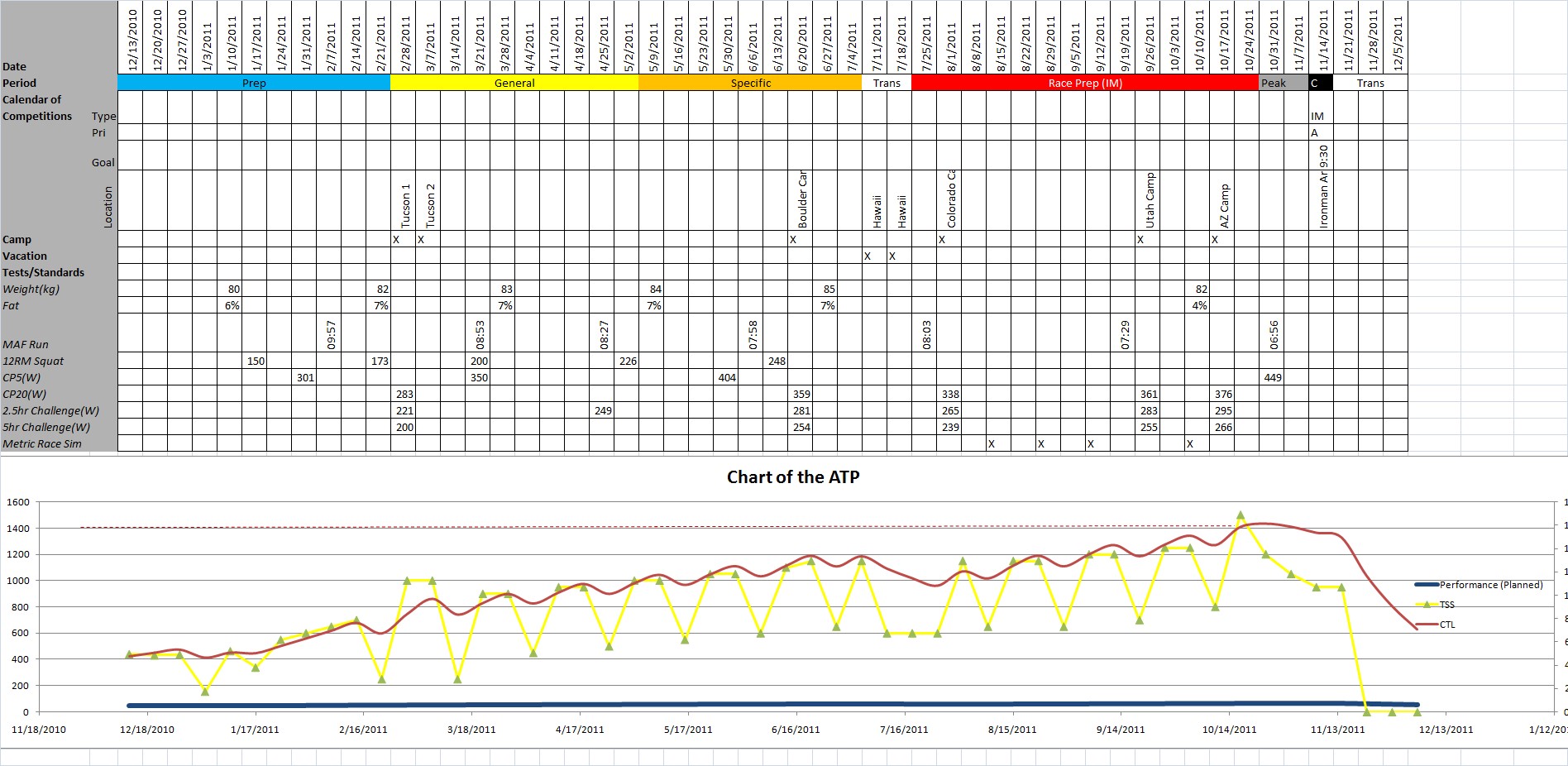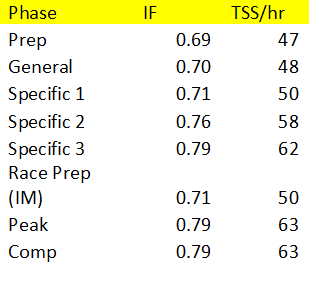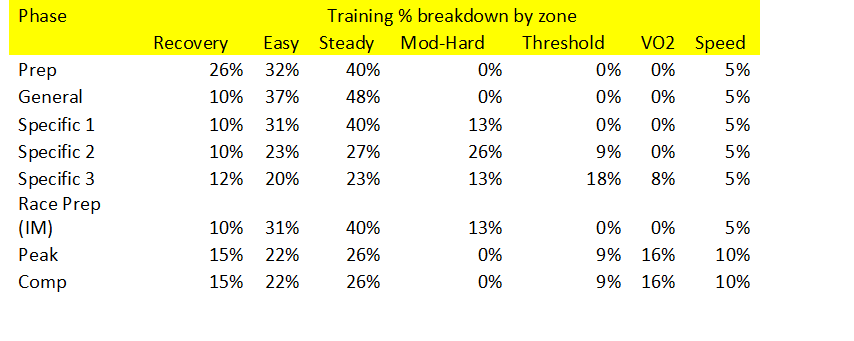Season Planning: Part 4
Alan Couzens, M.Sc. (Sports Science)
Updated: Nov 17th, 2016
This is a reprint of a 2010 article that I wrote for the old Endurance Corner website. I use basically the same approach today, although some of the intensity numbers are a little lower in the early phases of the year (higher % easy in General and Prep phases). Given Training Peaks new feature addition of building your Annual Training Plan with TSS, I figured it would be a good time to slot it back in the rotation.
#####

“Extreme volume in music very often disguises a lack of actually important content.”
- Michael Tilson Thomas
In the last article that I wrote on season planning, I offered some thoughts on the optimal way to plan your training stress to have you arriving at your goal performance level. In the article prior to that, I talked a little about the way that I phase an athlete’s year to optimally address their personal weaknesses. In this final installment, I’m going to bring those 2 concepts together and show how these elements go into determining the actual training volume and intensity that we plan for each week.
I signed off the previous article with a chart showing both TSS per week and phasing of the Annual Plan for a hypothetical athlete. This is shown below….

While this chart identifies the general load that I will be planning for this athlete on a weekly basis, it tells us nothing of the composition of the load. For instance, is the 600TSS of the 8th week to be done as 6hrs of threshold work or 12hrs of steady aerobic training?
Does it matter? Is all TSS created equal? Go and do a 12 hour aerobic week then a 6hr week all pegged at threshold and you will have the answer to that question. Similarly, go do a 6hr threshold week as your first week of the season vs a 6 hour threshold week after 12 weeks of 12hr aerobic weeks and see if there is a difference in your ability to tolerate the intense load. This is the essence of periodization.
Therefore to start to answer the question of how the load breaks down at a given point in the training year, we look to the training phase that the load falls within. I set up my athletes training so that there is a quantitative standard intensity that they can expect for each training phase. By doing this, we're able to fulfill that universally applicable truth that ‘it’s not just how big it is, it’s what you do with it’ (the training load that is) &, by altering the duration of the training phases, make the composition of the load much more specific to the weaknesses of a given athlete with respect to their target event, weaknesses that we may only identify as we’re checking our benchmarks as we go along.
For instance, as we begin the Specific Prep period, an athlete may fail to hit a key tempo challenge workout benchmark and we may decide to repeat a Specific 3 block. In this case, we will stick to the TSS load plan, however the volume and intensity will differ from what we had initially planned. In this way, load remains center stage, we don’t sacrifice load for composition but we may tweak the composition a little to hopefully give the athlete more performance ‘bang’ for their load ‘buck’.
In the training model that I use, all Prep weeks will have a standard IF of 0.69. General weeks have a standard IF of 0.7 and so on and so forth… Therefore once the TSS and phase of training is determined, it’s very simple to identify how many actual weekly hours of training this represents.
For a balanced “General” week of 1000TSS at an IF of 0.7 (49TSS/hr), The hours of training are 1000/49 = 20.41hrs. This adds a critical element of consistency to the training phases.
Suggested intensities & TSS/hr numbers for each phase are shown below…

Once the total volume and intensity of the block is determined, the final step is to break your target intensity down into the actual percentage that you will devote to the various intensities or zones within the week. The following offer one possible combination of easy, steady, mod-hard and threshold training to arrive at the goal IF of each respective training phase.

I’ve endeavored to show in these series of articles a practical method of working from your goal performance down to the nitty gritty details of the type and amount of training that you will need to do today to give you the best shot of achieving that goal. While the science of performance modelling is far from perfect, by beginning to understand your own personal training-performance relationship you will greatly improve the efficacy of your training time. Here’s to 2011 being your smartest year of training to date!
Train smart,
AC
TweetDon't miss a post! Sign up for my mailing list to get notified of all new content....
